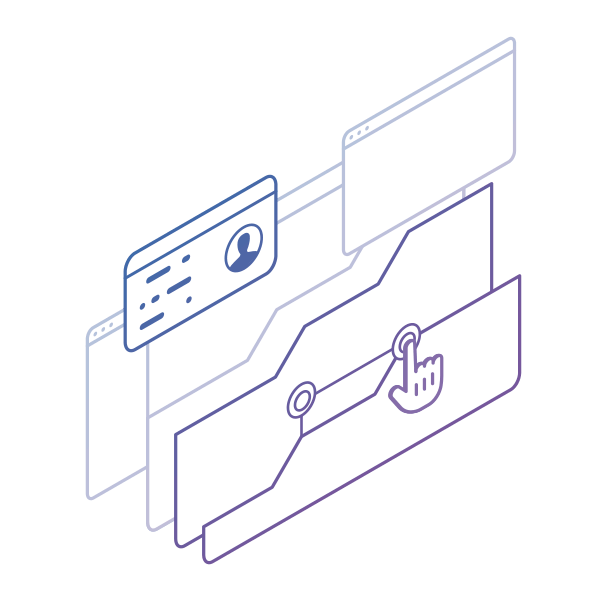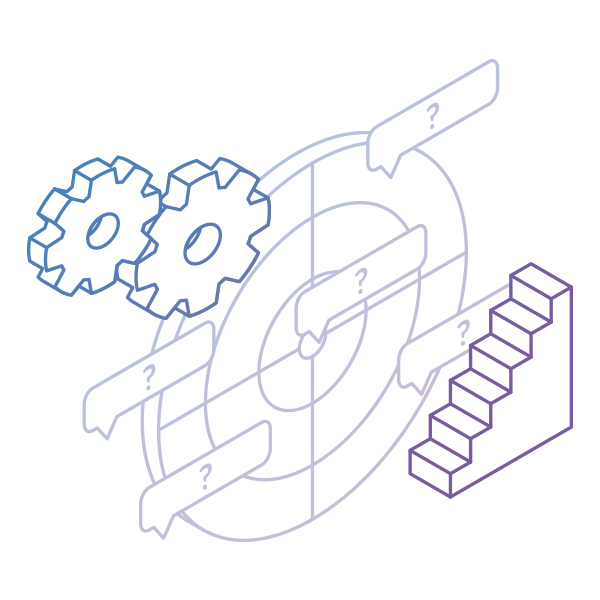What Is Agile Project Management?
Agile project management is an iterative approach to managing projects that focuses on continuous value delivery and incorporating customer feedback with every iteration.
Agile project management involves breaking down projects into smaller, iterative phases and continuously reassessing and adapting plans based on feedback and changing requirements. The goal is to deliver high-quality products or services quickly and efficiently while remaining responsive to customer needs and market trends.
There is also the common misconception that Agile is a methodology. Instead, Agile is a way of thinking for collaborative problem-solving and an approach people apply to modern-day project management.
A Brief History of Agile
Initially adopted by the software development industry, let's quickly explore how the idea of Agile project management emerged in the first place.
It all started with the so-called "application development crisis" in the early 1990s. Back then, there was a significant lag time of about three years between a business need for an application and the actual software delivery. Often, by the time of the final product release, the technology was already different, or customer requirements had drastically changed. This resulted in many failed projects and sunk costs.
Those extremely long project lead times led to the frustration of thought leaders in the software development industry. They started organizing informal meetings between themselves, determined to find a way to develop software solutions more easily and effectively.
This is how it came about the now-famous gathering of 17 software development leaders at the Snowbird ski resort in the Wasatch mountains of Utah between 11-13 February 2001. The group met to talk about skiing and to relax generally. However, what eventually emerged was the "Agile Manifesto" that changed how we manage projects today.
What Are the 5 Pillars of Agile Project Management?
In the core of Agile project management lies the word "agility," which means "mobility, nimbleness," as well as from the Latin "agree:" "to do, to act." This signifies the ability to move something forward in a quick way that allows easy changes of direction.
So, in terms of project management, "agility" has five essential attributes that form the building blocks of the Agile process:
- Transparency
- Customer focus
- Adaptability
- Sense of Ownership (Effective Leadership)
- Continuous Improvement
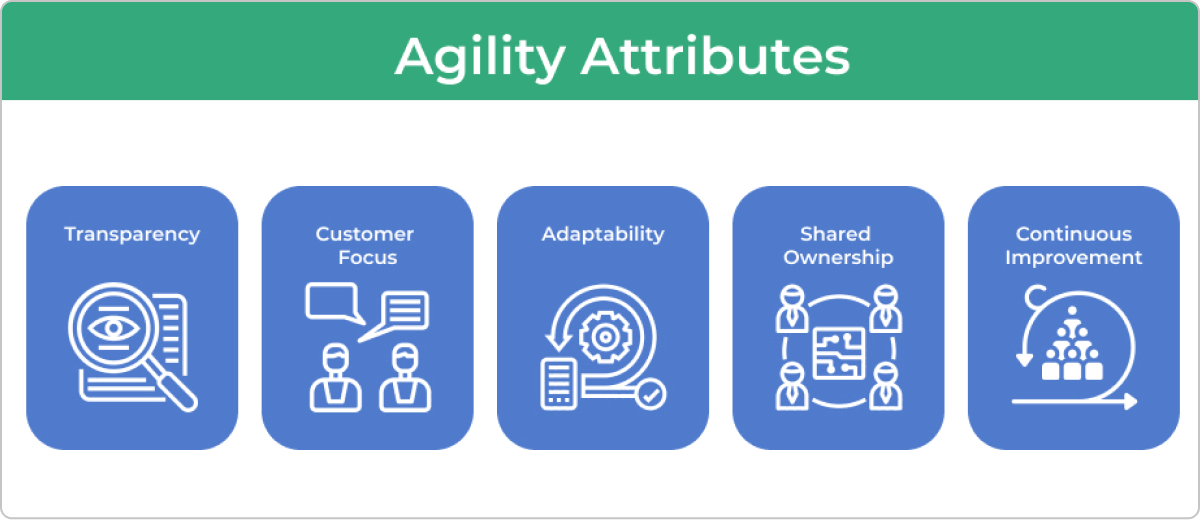
Combined, they are what makes a project Agile. To discuss them in more detail, let’s break down each one of them below:
1. Transparency
One of Agile project management's central themes is the shared understanding of the process (including the definition of done) among all concerned parties. This calls for increased transparency in the way teams work and communicate.
In an Agile environment, people openly share their work progress. In Businessmap (previously known as Kanbanize), we integrate information radiators such as Kanban boards to do that. This allows everybody to understand what their peers are doing and how they are doing it, enabling conversations on how to do it better.
Furthermore, team members are encouraged to freely share their ideas and challenges without feeling concerned that this might compromise their status in the project. This pattern of organizing and managing work creates an Agile organization where teams feel safe to own their mistakes and collectively work toward their resolution.
10 Years Kanban Experience In 1 Free Book.
Project Manager's Guide to Kanban
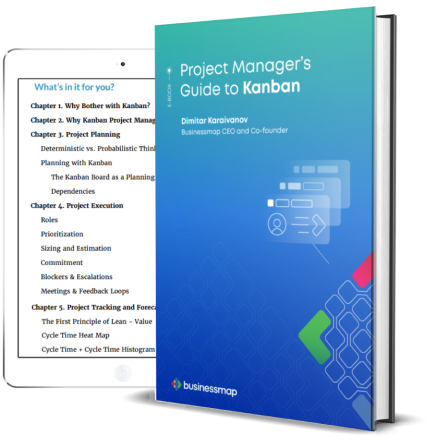
2. Customer Focus
A famous quote by the serial entrepreneur Dave Mcclure states that "Customers don't care about your solution. They care about their problems". In other words, even if you have the best solution in the world, in case your customers don't see how in reality, it will help them solve their problem, they are not going to want to use it.
That's why the Agile approach to project management heavily focuses on ensuring customer requirements are well understood through constant collaboration. The goal is to provide customers with not just what they asked for but what they need. This is a common challenge in a knowledge work environment, as when work is practically invisible, its specifications could be easily misunderstood.
So, frequent feedback loops in the Agile project delivery lifecycle serve as checkpoints where customers can see how "what they thought they wanted" actually looks in practice. This contributes to the development of new knowledge and the exploration of possible innovative solutions.
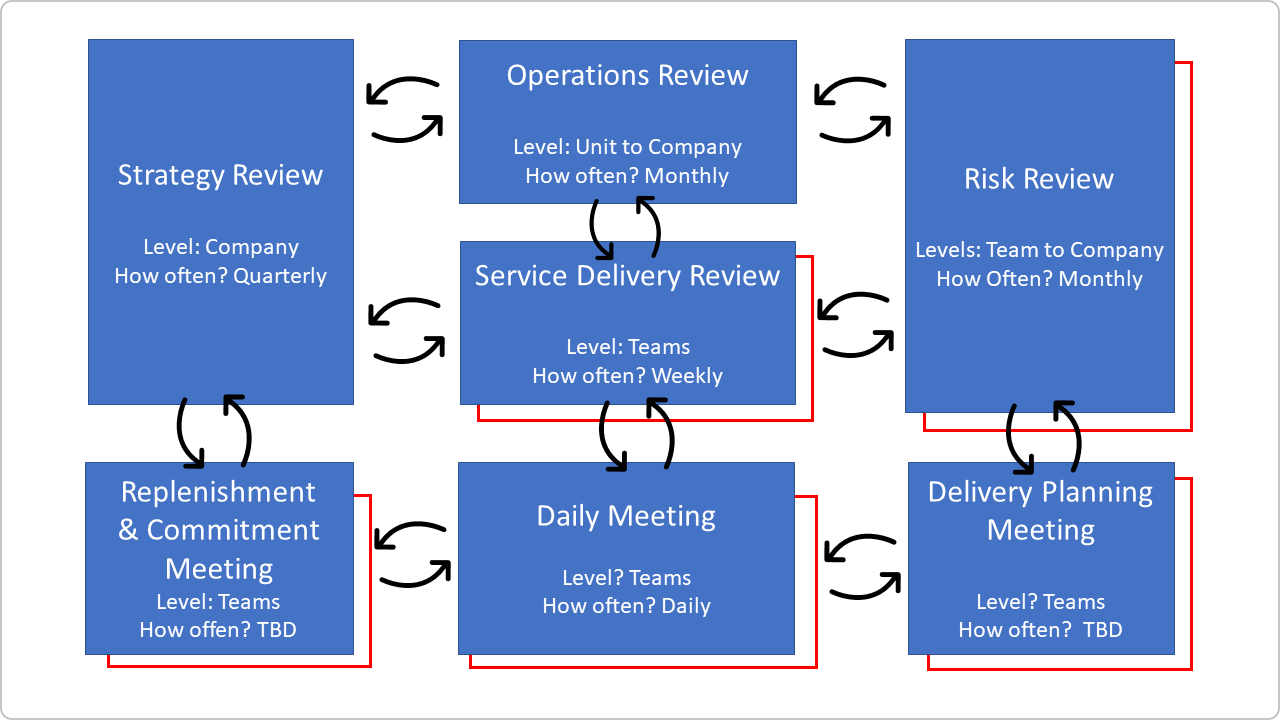 Feedback loops for improvement and collaboration
Feedback loops for improvement and collaboration
Also, through frequent customer collaboration, Agile aims to bring increased efficiency to projects. One way to achieve this is by reducing extensive project rework that creates a massive waste of both time and resources. As a result, Agile projects enjoy lower production levels and delay costs, making the final product or service cheaper for the end customer.
3. Adaptability
The other main idea in Agile project management is to enable teams to respond better to changes due to the checkpoints mentioned above. This also calls for more frequent value delivery to the end customer so teams can gather fast feedback directly from the market.
That's why, instead of producing one big batch of work, Agile focuses on an iterative approach where teams break down their projects and continuously deliver small chunks of them while retaining flexibility for the remaining work.
The goal is to ensure that what is being worked on is synchronized with the end-user alongside the Agile project lifecycle. As a result, you will capture any changing customer requirements early in the process, quickly adapt to the new situation, and avoid any significant delays in the final project delivery.
4. Sense of Ownership
Another attribute that "agility" brings to project management is instilling a sense of ownership within teams, contributing to more effective leadership.
For example, in traditional project management, all information pieces go through a dedicated project manager who allocates work to different team members. This can be ineffective due to the increased likelihood of some of the information getting lost.
In contrast, Agile projects give a large fragment of the decision-making process to the team members.
In reality, they are the ones closest to the work's technical details, making perfect sense to include them in the planning processes actively and decide how to execute their work best. Eventually, team members are encouraged to collaborate and find solutions to problems based on their understanding instead of waiting for the "boss" to say what needs to be done.
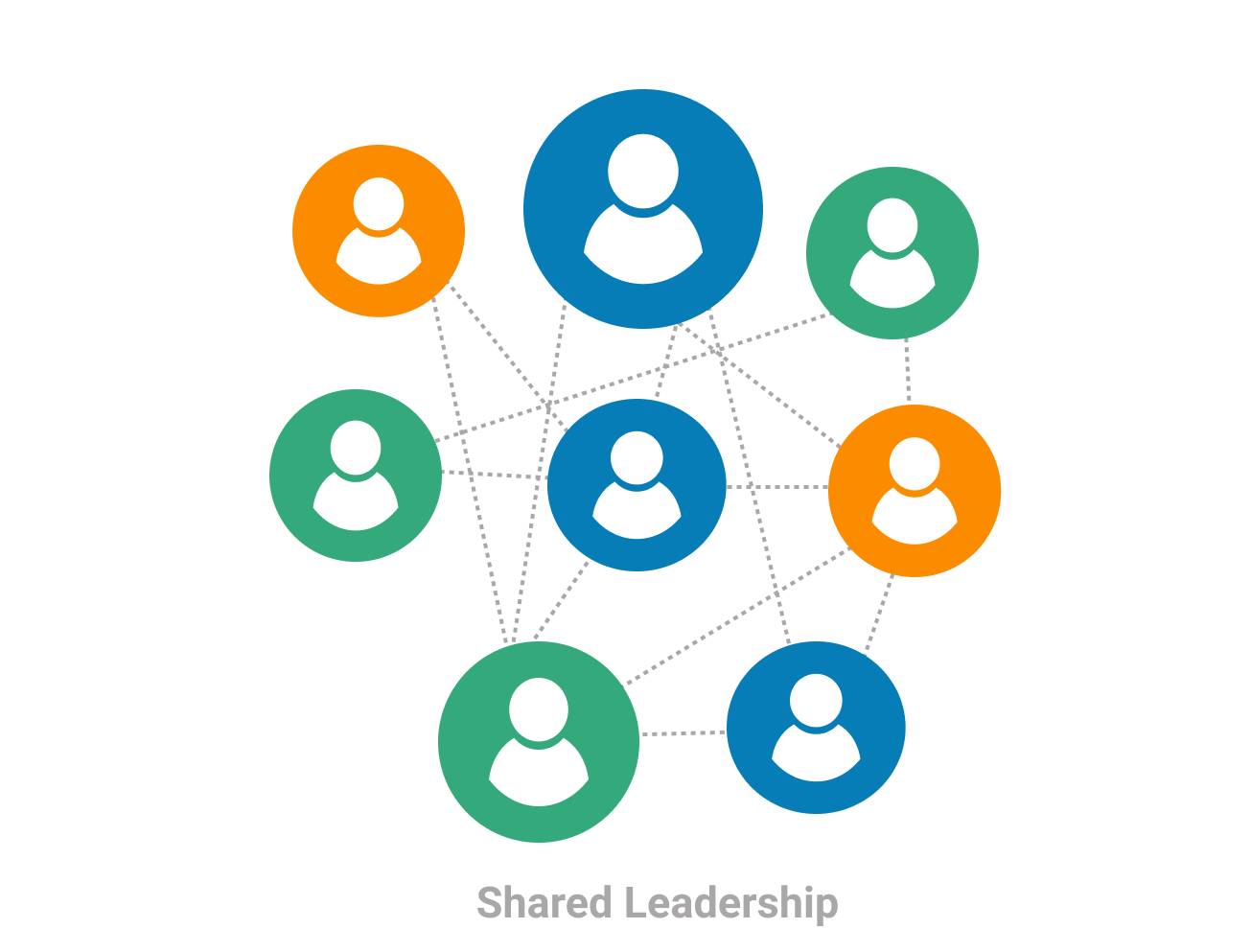
This creates an environment of shared ownership that motivates and empowers teams to be more efficient in their work. As a result, they will contribute in the best possible way toward completing the project.
In turn, the leadership becomes more effective because their focus diverts toward managing the work (not the workers), which generates the business's profits. Therefore, successful Agile project managers set shared goals with their team members, help remove impediments by optimizing the flow of work, provide the necessary resources, and encourage collaborative learning.
5. Continuous Improvement
One of Agile project management's most important attributes is creating an environment for continuous improvement. Teams regularly engage in frequent learning cycles alongside the project’s development instead of one big "lessons learned" session at the end of it.
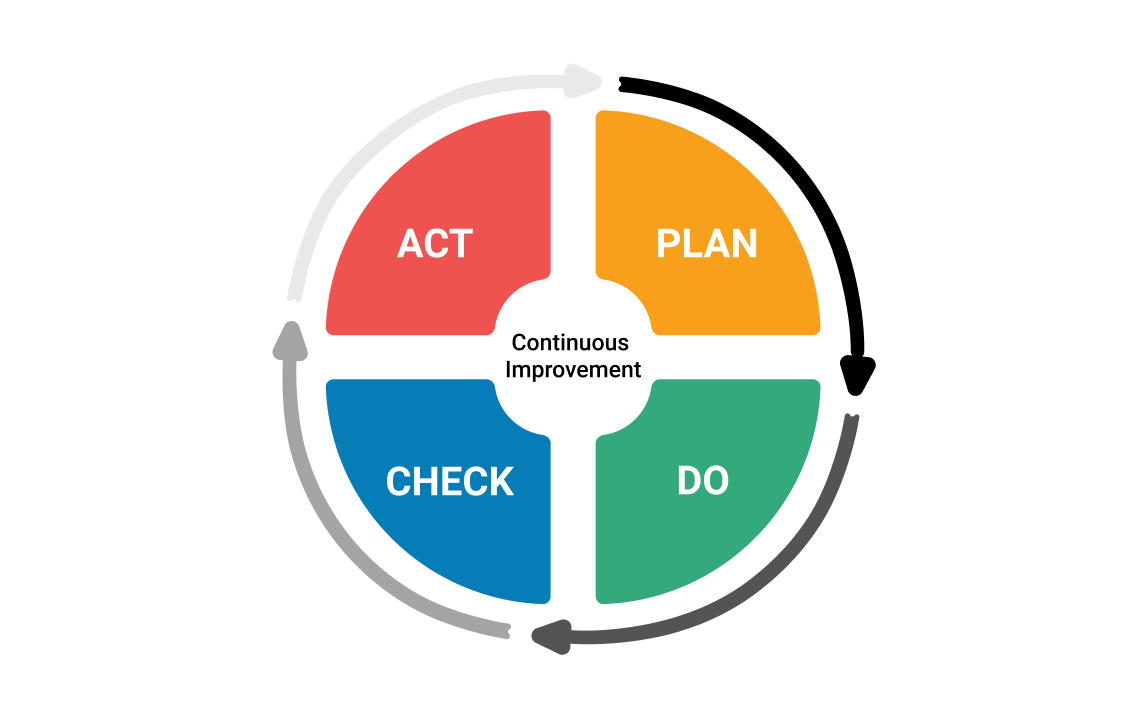
This ensures that essential process improvements occur while the Agile project is still in motion, which can positively contribute to the successful delivery of the final solution to the end customers. Of course, there is nothing wrong with the other approach, which is still present in the Agile project management process. However, in an environment where the work is invisible and changes often occur, relying only on that turns out to be ineffective for successful Agile project delivery.
Furthermore, work is broken down into small deliverables and continuously handed over to the customers for their examination and feedback. This also contributes to the continuous refinement of a product or service with the goal in mind of making it the perfect fit for the target customer.
What Are Agile's 4 Values and 12 Principles?
Becoming agile is all about shifting your mindset and following specific values and principles in your work.
What Are the Four Key Values of Agile?
- Individuals and interactions over processes and tools.
- Working software over comprehensive documentation.
- Customer collaboration over contract negotiation.
- Responding to change over following a plan.
It's important to mention that these values were defined in the following format: "While we value the things on the right, we value the things on the left more". This means that processes and tools, documentation, contracts, and planning are still fundamental. We just have to use them wisely.
What Are the 12 Principles of Agile?
- The highest priority is to satisfy the customer through early and continuous delivery of valuable software.
- Changing requirements must be welcomed, even late in the development process. Agile processes harness change for the customer's competitive advantage.
- Working software must be delivered frequently, from a couple of weeks to a couple of months, with a preference for a shorter timescale.
- Business people and software developers must work together daily throughout the project.
- Build projects around motivated individuals. Give them the environment and support they need, and trust them to do the job.
- The most efficient and effective method of conveying information to and within a development team is face-to-face conversation.
- Working software is the primary measure of progress.
- Agile processes promote sustainable development. The sponsors, developers, and users should be able to maintain a constant pace indefinitely.
- Continuous attention to technical excellence and good design enhances agility.
- Simplicity – the art of maximizing the amount of work not done — is essential.
- The best architectures, requirements, and designs emerge from self-organizing teams.
- At regular intervals, the team reflects on how to become more effective, then tunes and adjusts its behavior accordingly.
Learn more about the 12 principles of Agile project management.
Even though Agile project management stems from the software development industry, it is successfully applied to many other areas, such as product development, architecture, marketing, financial services, etc.
What Are the Benefits of Agile Working?
Adopting the Agile approach to project management offers numerous benefits. Some of the most significant advantages are supported by the latest statistics on Agile usage:
- Fostering a culture of accountability and a sense of shared ownership.
- Encouraging the exchange of diverse ideas through cross-functional collaboration and user engagement.
- Creating an environment and embracing the benefits of continuous improvement.
- Greater flexibility to adapt and manage the changing client requirements and product defects.
- Having clearly defined goals and a better understanding of the work process.
Traditional vs. Agile Project Management
Even though both approaches originated in different industries, today, they expand their application to various fields. Let’s briefly touch the surface of each one of them and uncover what is specific to Agile and traditional project management.
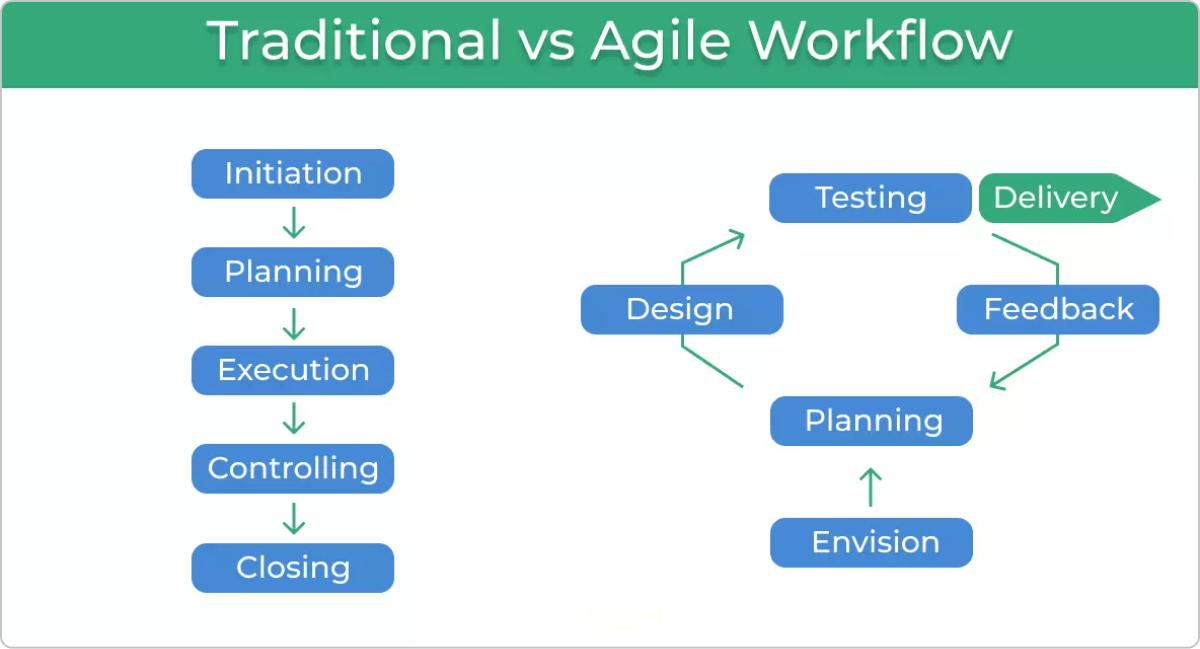 Traditional vs. Agile work management
Traditional vs. Agile work management
Traditional project management follows a linear, sequential approach with predefined phases and fixed requirements, aiming for predictability. This method, also known as Waterfall, works well for highly structured projects with clearly defined goals and deadlines where upfront planning is essential. It has a hierarchical structure with top-down communication. Its trait of not being able to quickly adjust the product/project to the changing customer requirements and market demands often leads to significant resource waste, extra expenses, and project failure.
Agile project management embraces change and flexibility, using iterative sprints that encourage teams to work on different phases of a project simultaneously. Agile promotes self-organizing teams, frequent, transparent communication, and constant feedback exchange during the process. This allows teams to frequently deliver value to customers by adapting to their evolving customer needs.
What Are the Most Popular Agile Project Management Methods?
As Agile became a prominent topic at the beginning of the 21st century, many frameworks rapidly gained popularity (Scrum, Kanban, SAFe, etc.). However, many companies seeking true business agility realized that highly prescriptive frameworks and agility are quite the opposite. This is why many organizations today are looking into different Agile methodologies that support building a stable Agile workflow and tailoring the processes to their own needs instead of adopting highly prescriptive frameworks.
Today, the most popular Agile project management frameworks and methods include Kanban, Scrum, and Scrumban.
Kanban
Kanban focuses on evolutionary change and continuous process improvements applied through six fundamental Kanban principles and practices.
At its core is workflow visualization, which allows managers and teams to organize and manage work much better, keep track of various projects, collaborate more effectively, and acquire a better overview of the process.
One of the most critical Kanban practices is limiting work-in-progress, which helps teams to increase their focus and prioritize finishing work to improve overall efficiency.
We Will Teach You Kanban in 7 Days. Learn the Basics. For Free.
The only email crash course you need.
Dive deeper into Kanban and how to improve work efficiency with our dedicated article - What Is Kanban? Explained for Beginners.
Scrum
Scrum is an iterative approach that uses time-boxed intervals and splits projects into fixed periods called sprints. The primary purpose is to support teams to productively and creatively deliver products of the highest possible value.
How work is managed in Scrum is that from the product backlog, work items are selected and moved to the Sprint backlog until the capacity for the Sprint is reached. A self-organized or self-managed team does the work itself during the Sprint, which may be considered as projects with a fixed length of no more than one month.
Read our dedicated Scrum article to learn more about this Agile framework – its benefits, principles, roles, and artifacts.
Scrumban
Scrumban is an Agile approach for managing projects which resulted from the combination of the Scrum framework and the Kanban method. Scrumban takes Scrum to the next level by applying Kanban principles and practices. This allows teams to increase output and decrease waste while providing visibility and higher productivity. It also lets teams apply Agile planning to their full potential.
Get to know in detail how Scrumban works, its advantages and limits in our extensive guide.
Agile Project Management Frequently Asked Questions (FAQ)
Why Do You Need Agile Project Management?
Agile project management can help in prioritizing what matters. By fostering adaptability, enabling value delivery, and ongoing feedback exchange, the Agile approach to project management allows companies to embrace true organizational agility.
The goal, of course, should not merely be simply "being agile" but rather the enhancement of your operations. Incremental and iterative approaches lead to better predictability and greater risk management, empowering you to achieve your goals confidently.
What Are the Agile Project Management Phases?
The Agile project delivery process can be summarized in the following phases:
- Envision: Create a high-level product/service vision for the customers as well as determine who will be involved in the project.
- Speculate: This is an extension of the "Envision" phase, where Agile teams gather the initial broad requirements for a product/service and develop an iteration plan based on the vision.
- Explore: Work on the project deliverables with a focus on flow, aiming to get feedback from the customer as fast as possible.
- Adapt: Review delivered results and adapt as necessary to current conditions.
- Close: Conclude the project, and pass along key findings.
What Are the Differences between an Agile and Waterfall Approach?
Four distinct elements underscore the contrast between Agile and more conventional waterfall approaches to project management.
These include prioritizing customer collaboration above contract negotiation, emphasizing individuals and interaction over process and tools, advocating for adaptability in response to changes over adhering to a rigid plan, and promoting the use of prototyping and working solutions rather than exhaustive documentation.
What Are Some Common Challenges Faced by Teams Implementing Agile Project Management, and How Can They Be Addressed?
Some common challenges faced by teams implementing Agile project management include resistance to change, lack of communication and collaboration, difficulty in adapting to new roles and responsibilities, and unclear goals and priorities.
To address these challenges, teams can:
- Encourage open communication and collaboration among team members.
- Provide proper training and support to help team members adapt to new roles and responsibilities.
- Establish clear goals and priorities for each iteration.
- Foster a culture of continuous improvement and adaptability.
- Address any resistance to change through education and active involvement of team members in the implementation process.
By addressing these challenges, teams can successfully implement Agile project management and achieve successful project outcomes.
How Does Agile Project Management Handle Project Risks and Changes during the Project Lifecycle?
Agile Project Management handles project risks and changes during the project lifecycle through continuous planning and adaptation. In Agile, risks are identified early and addressed through iterative and incremental development. The team prioritizes risks based on their impact, likelihood, and urgency and develops mitigation strategies accordingly.
Similarly, changes in the project scope or requirements are embraced as opportunities for improvement, and the team adapts its plans and processes accordingly. Regular reviews and retrospectives help the team to identify potential risks and changes and to adjust their approach as needed.
Businessmap is the most flexible software
to align work with company goals






